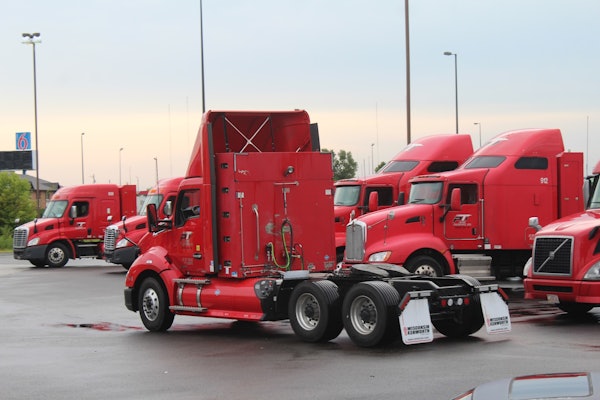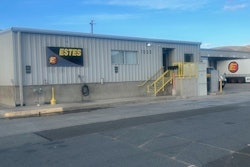There are a lot of differences between a W-2 and 1099 truck driver that should be considered before deciding what’s right for you.
The Cliffs Notes version is, W-2 drivers can get paid benefits and have less to worry about come tax season, whereas 1099 drivers can earn a little bit more money because of tax write-offs and they have more control over how they run and distribute their money.
Whether someone is classified as a 1099 independent contractor or a W-2 employee depends on three major categories:
The relationship
Are benefits included? Is the job going to be performed for an indefinite amount of time? Is the relationship more permanent or flexible?
The behavior
Does the company control what the driver does and what jobs they must carry out? Does the company decide how and when a job must be done?
The finances
Does the company provide all supplies? Does the company handle all expenses? Does the company control if the driver can seek other work in the market?
According to Illinois law, an independent contractor is someone who is free from the control and direction of a company over the performance of their work, performs their work outside of the place of business, and is in an independently established trade, occupation, profession or business. There can be some gray area within these stipulations. It all comes down to how the driving positions are communicated and implemented.
So, let’s talk about which one might be right for you.
1099 Overview
1099 drivers (independent contractors), are essentially business owners who can contract their services to different customers as they please. They are responsible for reporting their own income and payment of self-employment taxes. The general recommendation is that 1099 drivers set aside 20% to 25% of their net income for a quarterly Form 1040-ES tax payment. Because the companies that 1099 contractors work for don’t withhold Social Security or Medicare taxes for them, they are required to pay a self-employment tax of 15.3% if they fall within certain income thresholds.
The two types of 1099 drivers can be owner operators who own a truck, pay for all expenses and have more authority over the loads they take and where they run; and independent company contractors who want to join a specific carrier for an indefinite amount of time, rent the equipment from the company, and have more specific guidelines for when and where to offer their business services.
1099 Negatives
No benefits
1099 drivers must provide their own health insurance, retirement savings, they don’t get paid vacation time, etc. They will also have deductions from their pay for occupational insurance, a security deposit and possibly more.
More to manage on your own
As a business owner, you are required to oversee filing your taxes either on a quarterly or a yearly basis. This can seem daunting and complicated to people who have never done it before. You may also be required to open an LLC or small corporation to ensure you are being classified correctly.
No protection
Business owners are responsible for their own success. For instance, payment for a 1099 driver is totally contingent on the value of the services offered. A W-2 employee may get paid $30 an hour no matter what they do, but a 1099 driver will be paid based on factors like the number of miles driven or the amount of gross that was made on a delivered load.
1099 Benefits
Freedom
Most people get into trucking for the freedom it offers. 1099 drivers have more flexibility and ownership over how they perform their services. As a business owner they have more authority to choose the contracts they want to run.
More money
1099 drivers can deduct a significant amount more than W-2 drivers from their taxes. Per Diem, Qualified Business Income Deduction (QBI is a 20% pass-through deduction based on your income), health insurance premiums and anything they can list as a business expense can all be listed on top of the Standard Deduction.
Ownership experience
Some may be content as a W-2 company driver for the entirety of their driving career, but operating as a 1099 independent contractor can help develop a great business acumen. Being a 1099 driver either as a company contractor, owner operator or fleet owner, changes the way a driver approaches their career. The opportunities for 1099 drivers are endless. Take it from me, I started as a single 1099 owner operator and now I’m running a company of over 200 drivers because of what I learned from that experience.
W-2 overview
W-2 drivers are viewed as company employees. Taxes are taken out each paycheck and the company is responsible for ensuring that the appropriate taxes are taken out before payments are made to drivers. These taxes include federal and state income taxes, Social Security, Medicare, and in some cases even local tax withholdings. Company truck drivers receive a W-2 form in January of every year which reports the compensation paid to the employee, as well as the taxes that were withheld.
W-2 negatives
Less control
As a company employee, you have less control over what, where and when you drive. Forced dispatch may be a trigger word for many, and it’s typically a reality for the W-2 company driver. In addition to this, W-2 employees must trust the government to appropriately manage their money before they receive payment, whereas 1099 drivers have more money in-hand per paycheck and more control over how they distribute their own money.
Less pay
W-2 employees can’t get a Per Diem tax break or write off their cell phone bill as a work expense. Therefore, despite the added bonus of a retirement plan and paid time off, W-2 employees are more limited with what they can write off on their taxes and don’t have as much negotiation power as a 1099 contractor would have.
More costs for the employer
Employers will incur massive costs when they are responsible for unemployment insurance, retirement plans and other benefits. It may sound like a good deal for the employee, but as we saw first-hand this year this structure can lead to trucking companies shutting down in a bad market. It can also lead to less job opportunities within the company, and less room for financial growth. Fleet owners are at a much higher risk of financial strain when using a W-2 structure.
W-2 positives
Employee benefits
Company drivers are entitled to any benefits that might be offered by a company. These can include health insurance, 401(k), paid time off, unemployment, etc.
Taxes are taken out
Tax season will be easier for W-2 employees. When filing an income tax return, the IRS and state will determine if the taxes paid on every paycheck were the right amount and issue a refund or demand that the employee pay any taxes that may still be owed. W-2 employees are responsible for 50% of Medicare and Social Security taxes and these taxes are taken out automatically.
Protected rights
W-2 employees have more legal rights than an independent contractor. For instance, states like Illinois offer protection for drivers to ensure they are paid according to the contractual agreement. In California, company drivers are ensured the rights of a fair wage, a safe work environment, redundancy payments and more.
Overall, there are pros and cons for the employer and the employee in both 1099 and W-2 scenarios. It’s wise to understand the intricacies of both sides and then choose according to what you believe is best for your situation.












